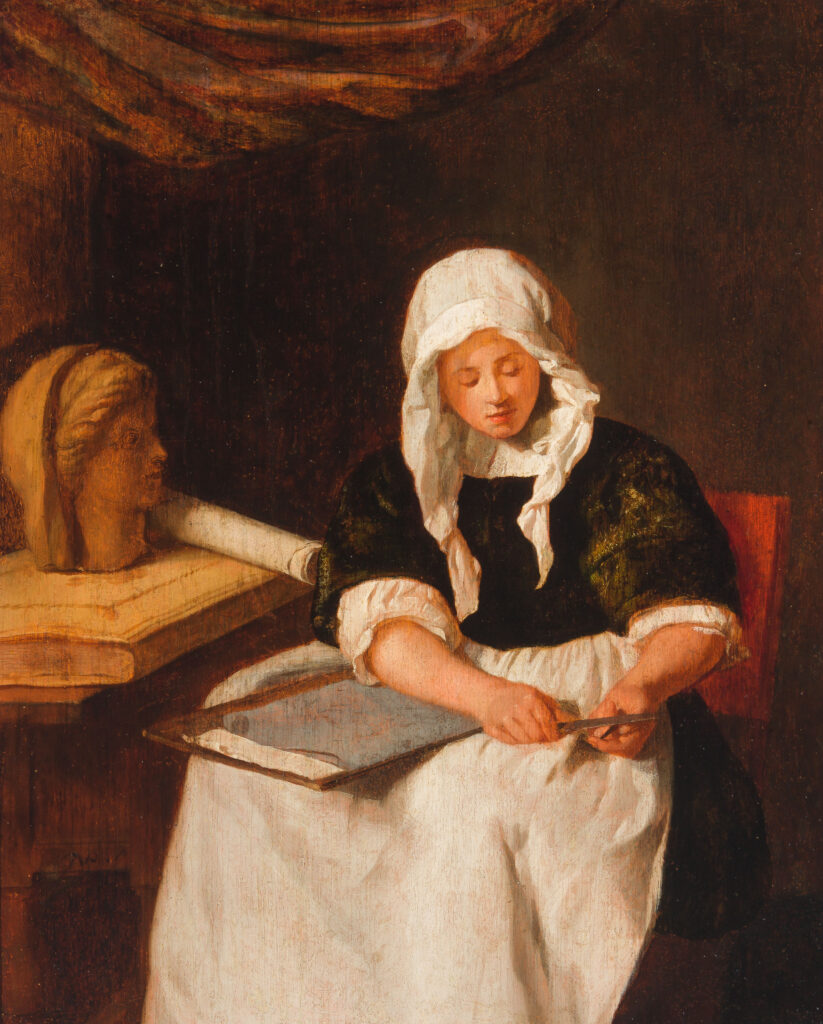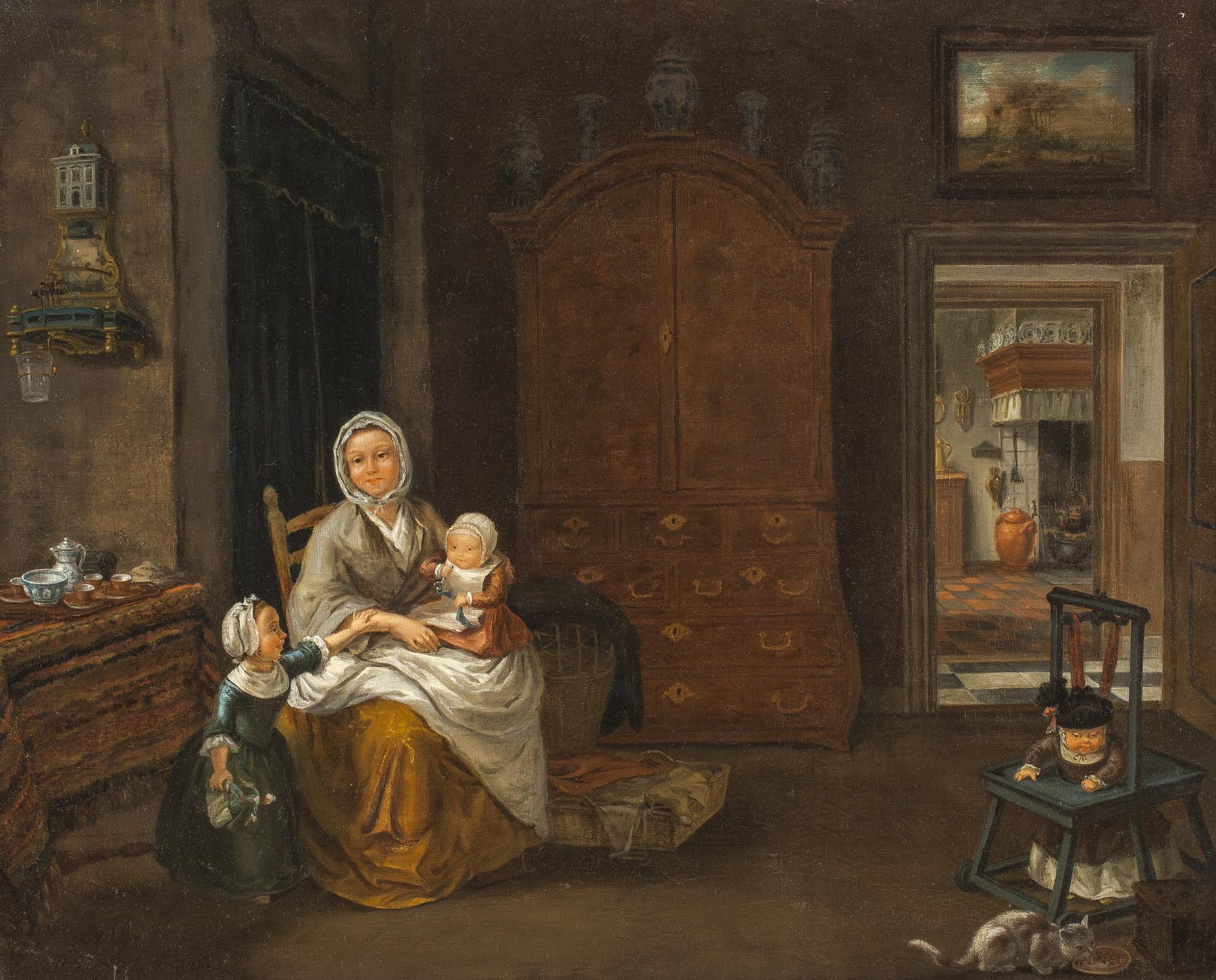Joost van Geel
Rotterdam 1631 - 1689
A Woman in an Interior drawing from a Female Bust on a Table

Exhibitions:
Essay:
Joost van Geel was the son of Jan Joosten van Geel a rich gin manufacturer and Ingetje Lucasdochter van Leeuwen. He was educated as a merchant but became a poet, painter and draughtsman.
He travelled in France, Italy and England. In 1666 he married Marietje Jacobsdochter van Wetteren in Rijnsburg near Leiden where he had joined the Chapel of Collegiates before settling in Rotterdam where he remained until his death.
A very credible account of the well-known collector G.van der Pot van Groeneveld (whose wife was van Geel’s granddaughter) to the art dealer J.B.Lebrun led Houbraken to believe that Joost van Geel was a pupil of Gabriël Metsu. This is certainly born out by similarities between their style and subject matter, and paintings by Geel have been mistaken for works by Metsu in the past.
This is a rare example of van Geel's work and a typical subject of his. We see a young woman, her sleeves pulled back while she sharpens a pencil or a stub of charcoal to sketch a classical bust. Her elbow rests on the paper and wooden panel on her lap, holding it fast while she works. The absence of an infant or a male suitor, common in scenes such as this, lends to the sense of quiet concentration as the artist is absorbed in her craft.
Not enough is known about van Geel to guess at whether the sitter might be a female artist that he knew, but it is perhaps more likely a staged scene with a family member or servant modelling for him.
Women in the act of drawing, painting or sculpting was a rare subject at the time. Female artists were few in number during the Dutch Golden Age though they were far more common than in other nations. Many women artists found success painting still lifes like Rachael Ruysch and Clara Peeters, while comparatively fewer specialised in portraits and genre scenes, such as Judith Leyster and Maria Schalcken. This makes the present work particularly unusual and a fine homage to the underrepresented creative impulse of women in the Netherlands during the period.
Provenance:
European Private Collection
Literature:
P.Haverkorn van Rijsewijk, ‘Joost van Geel’, Oud-Hollland 16 (1898) p.32-50
